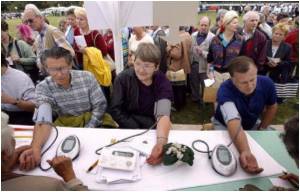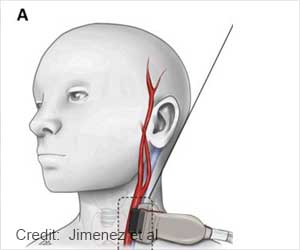Key players in a little-known biochemical pathway that appears to regulate blood pressure have been identified by researchers at the University of Pittsburgh School of Medicine.

The pathway he and collaborator David D. Roberts, Ph.D., of the National Cancer Institute (NCI), National Institutes of Health (NIH), have been exploring involves nitric oxide (NO) signaling. The cells that line blood vessels, called the endothelium, produce NO in a few biochemical steps. NO promotes blood vessel dilation and increases blood flow. Conversely, endothelial dysfunction, along with loss of NO production, is known to be involved in the development of many forms of cardiovascular disease, including hypertension.
Through cell culture and mouse experiments, the researchers found that a protein called thrombospondin-1 (TSP1) and its receptor, CD47, inhibit activation of the endothelial-based enzyme called endothelial nitric oxide synthase (eNOS), which in turn limits the production of NO and thus prevents blood vessels from relaxing and blood pressure from dropping. Circulating TSP1, at levels consistent with those found in the blood stream, is capable of inhibiting activation of endothelial-based eNOS and thus blocking NO production.
"For some time now, it has not been clear what role TSP1 served in the blood. Experiments in cells told us TSP1 could alter NO signaling. But TSP1 is a protein too large to cross through the endothelial layer and into the blood vessel wall, so it was not obvious how it could alter the muscle tone of the arteries," Dr. Isenberg said. "We also knew that mice genetically engineered to not produce TSP1 or CD47 showed more NO-based blood flow and blood vessel dilation. This suggested to us that perhaps circulating TSP1 was altering the ability of the endothelium to make NO by acting on eNOS."
He and his team are now developing agents that can alter the activity of eNOS by "blocking" the inhibitory signal mediated by TSP1 and CD47, which have the potential to be novel blood pressure-regulating drugs. Some cases of hypertension may arise from gene-based differences in these proteins, Dr. Isenberg noted.
"This work has identified a key pathway that effectively puts the brakes on nitric oxide production, which slows down blood flow," said Mark T. Gladwin, M.D., director of the Vascular Medicine Institute. "Furthermore, drugs that block this pathway have the potential to restore nitric oxide levels and may be useful for the treatment of high blood pressure and other vascular diseases."
Advertisement
Source-Eurekalert














